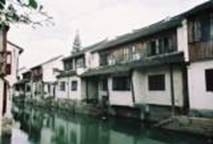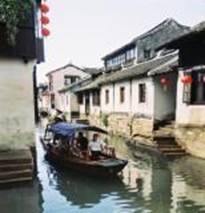Ilulissat…Ilulissat…how could I know what to expect? A warm welcome or a cold, unwelcoming environment? Will I go back to the raw, lush land that held so many surprises?
Ilulissat, town of the Icebergs in Greenlandic. I had never visited Greenland before and all maps had seemed to have “no data” or described it as “unexplored”. I could tell you about my flight up the Kanger fjord, the most productive ice fjord in Greenland, with a loop around what the pilots call “The Matterhorn” and our surprising collection of blueberries from the tundra. And about my perilous climb down the ladder from the moraine and my scramble up onto the icecap, my hair-raising attempt to get a picture of a melt hole where, at only a hundred yards in, the icecap was already 90 feet deep. I’ve searched for musk oxen and consumed reindeer steak (to be a vegetarian is difficult in Greenland). Or the icebergs which reminded me of my own culture – Duke Bluebeard’s Castle, the Sydney Opera House, and Henry Moore’s sculptures).
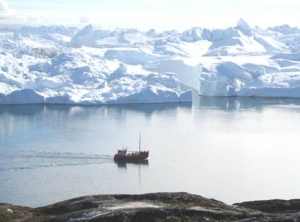 |
 |
|
Picture (Katharine Owen) :
Boat on Kanger Fjord
|
Picture (Katharine Owen) :
Sign Post to the World
|
I could contrast the security of London’s City Airport with the provincial railway station atmosphere of Kangerlussuaq, the airport everyone flies into before taking local planes or helicopters; towns and villages are not linked by road. Everyone knows everyone else, appears to have the same racial heritage – olive skin, black hair, small in stature by northern European standards. Even I quickly made the acquaintance of the map maker for Greenland; it is a huge land mass with a small community. Look at the Dali-esque red and green telephone cabins installed by the Americans in the 1940s and the huge signpost detailing the distance and direction to the North Pole, London, Tokyo and New York. I could describe all these things – but so could anyone else who had been to this part of the world.
Instead, I am going to take you into the home of my newfound friend, a Greenlandic lady, Johanne, I met on the local plane from Kangerlussuaq to Ilulissat. As I boarded, all eyes were on me – I was a foreigner, one who wanted to experience everything this new, desolate yet beautiful landscape had to offer. I asked one of the passengers on which side of the plane I should sit to get the best view of Ilulissat as I approached. Her English was broken but immensely better than my Danish let alone Greenlandic and her face kind, open and smiling. She found my enthusiasm coupled with fear of the unknown amusing. And as the approach was made to her home town, the most beautiful meringue icebergs came into view, floating effortlessly in a deep turquoise, supportive sea. And then Ilulissat came into view – a tiny township – each tiny house brightly painted, perhaps, to make a stance against the stark white and grey landscape.
Johanne asked where I was staying and, embarrassedly, I told her the Hotel Arctic (the poshest hotel in Greenland, owned by Air Greenland and my safety net). Johanne invited me to have tea with her and so, the next day, we sat down to fresh apple pie and cream, only three hours from the North Pole, in her cosy, brightly painted corrugated iron home, which reminded me of my grandfather’s home in North Wales, and exchanged cultures. The language barrier was overcome with her “word book”, Johanne translating into Danish then back into English. She was keen to tell me about the traditional Greenlandic culture, the hunting tradition which she and her husband relied on. He would go far to hunt for seal, every part of which was used for their everyday needs including the feeding of their huskies – nothing is wasted. She showed me proudly her traditional costume which she wears at Christmas, made of sealskin and extensive beadwork, all made by her, as is the intricate lacework in their home. She had mounted an exquisite – but sad to me – sealskin on the lounge wall; unlike the seal who looked up at our helicopter as we flew up the Kanger fjord, this had no eyes.
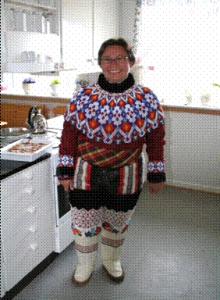 |
 |
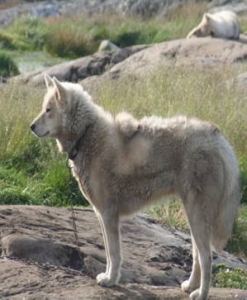 |
|
Picture (Katharine Owen):
Inside Greenlandic home; Johanne in traditional dress
|
Picture (Katharine Owen:
Greenlandic homes ; the sled and Huskies have right of way !
|
Picture (Katharine Owen):
One of the many working huskies
|
Afternoon tea turned into dinner as Johanne’s husband was due to return from his hunting. I was invited to stay for the fish starter (she ate the eyes of the fish – they contain the most protein) and seal wrapped in bacon. My heart beat fast with trepidation as we prepared the seal, which actually has exactly the same taste and texture as liver and bacon. But I am from a different culture, I hardly eat meat, I am brought up to believe that we should protect seals. And yet if I had been brought up in Greenland, would I eat the same diet in order to stay warm? Johanne’s husband told hunting stories over dinner; I enjoyed hearing the unusual “clicks” of the Greenlandic language. Around the dining room was an impressive display of all the cups her husband had won in husky sled races. The hospitality I encountered was second to none. Not only had I been invited into this lady’s home, but I had also been given a tour of the town, shown her many huskies which are working dogs and not to be stroked; taken to meet her daughter-in-law, her nephews and nieces, all of whom offered the same welcome.
Before returning home, we sat together in the afternoon sun, outside the wooden church, overlooking Disko Bugt (Disko Bay) beyond which is Davis Strait and Baffin Bay, watching the icebergs drift by. So long as one is not too close to the sea (a tipping iceberg can cause a tsunami), I can think of nothing closer to heaven. And so I shall be going back to visit my friend, and to join her and the rest of the town in the church service I missed. This experience, combined with the rest of my visit to Greenland, proved to me that friendship can stretch beyond the boundaries of beliefs and traditions.






